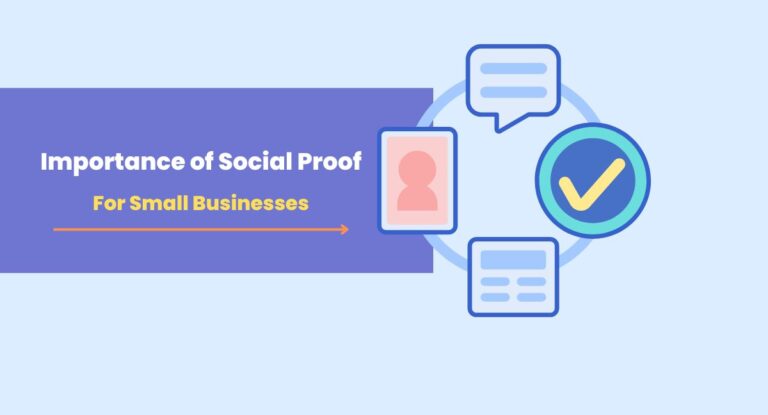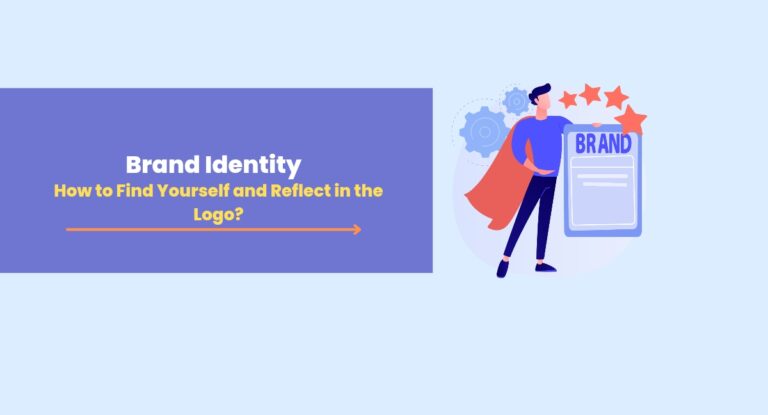Web design is an important part of a successful digital marketing strategy. A clear and professional website design will attract more visitors and keep them on your site for longer, which can lead to higher conversion rates. It’s not always easy to know where to start with web design, though – there are so many elements that go into making a site look good! In this post we’ll explore the key principles of successful website design and explain how they can help boost conversion rates.
Know your audience
When it comes to creating a website, knowing your audience is the most important thing. You need to know who your target audience is and what their pain points are. Once you’ve identified that, you can start to create content that appeals to that demographic and will resonate with them.
What are the biggest problems in this industry? Where do people hang out online? What do they like or dislike about other websites in my niche? These are some questions you should ask yourself when designing a new website for your business.
Compelling copy and bulletproof branding
Your website is a direct line of communication with your target audience. Therefore, it’s crucial that the copy and design are clear, engaging and consistent with your brand. A professional copywriter can help you craft a compelling message that converts visitors into customers.
A strong brand voice will be familiar to readers even after they’ve left your site—they should recognize it not just in their email inboxes but also when they see an ad or hear about a new product release on social media.
A style guide is essential for helping you maintain consistency across all of your communications (and keeping people from using Comic Sans). It should include guidelines on everything from fonts (Times New Roman? Helvetica?) to color usage (red for urgency; blue for trustworthiness), as well as rules around word choice (that is: don’t say “top rated products” when “best-selling items” would suffice).
Thoughtful logo design
Your logo should be memorable—ideally, it will be the first thing people associate with your brand. It’s also important to make sure it is clear and simple enough to read at any size. A logo should be consistent with your brand, but don’t be afraid to take risks on something new. When you think about how often the average person sees their company’s name or logo, it’s likely that your design is one of the most important things that people notice about your business.
A well-designed logo can communicate a lot about a company in only a few seconds: its longevity and history; its mission statement; its values as an organization; even how trustworthy and professional it is considered by others who’ve never met anyone from within those walls before! So make sure yours does all these things well!
The importance of color
The importance of color cannot be overstated. It’s the first thing your user will notice, and color can have a huge effect on how they feel about your website.
Color can evoke emotion, create a mood and even convey information. A good example is the use of red in ecommerce sites – red is widely associated with passion and heat, which makes it an excellent choice for selling products related to passion or heat.
Another important aspect of color is its ability to create brand recognition. Using specific colors across multiple platforms helps users recognise the brand across different media, which makes them more likely to buy from you again if they like what they see.
Design with brand in mind
In order to ensure that you are representing your brand properly, you need to design with it in mind. For example, if your logo is red and white, use those same colors on your website.
Similarly, if you have an easily identifiable logo or slogan (such as Wendy’s “Where burgers are our business”), ensure that it’s featured prominently throughout all of the content that goes live on your site. This can be done using a header image above the fold or even by including a small version of your logo above each navigation menu item.
The same principle applies when it comes to imagery: If possible, use images that have been taken by photographers who work with you regularly so they’re consistent with what visitors expect from the brand experience they associate with their favourite products/services/brands and not just random stock photos pulled off Google Images (unless of course those happen to be part of what makes up “your” identity).
The more ways we can make sure all information is consistent across all platforms – especially when designing websites – means we don’t have any surprises after launch time! And no one wants surprises like this because then there would be confusion amongst customers which ultimately leads them away from wanting more sales/businesses being successful through conversion optimization tactics such as these ones listed here today…
Attractive typography
Typography is the art of arranging type to make written language legible, readable, and appealing when displayed. It involves selecting typefaces, point size, line length, line-spacing (leading), letter-spacing (tracking), and adjusting the space between characters (kerning). Typography also may be used to select type for a variety of print media. The arrangement of type involves the selection of typefaces, point sizes (font size), line lengths (leading), space between lines or letters within a word or phrase and the spacing between words and letters in a text block; it may also involve modifying individual letter forms or shapes by hand (“hand kerning”), as well as structuring lines with indents.
A coherent style
In order to create a cohesive, professional-looking website, it is important to ensure that all elements are consistent. You can do this by creating a style guide for your brand. This will allow you to create a template or baseline for using elements such as typography, color palettes and imagery across all platforms (websites, social media pages and marketing materials).
To ensure that everything is aligned properly and looking good on the page, use a grid system like Bootstrap or Zurb Foundation 6 Grid System. These frameworks use 12-column grids that adapt based on browser window widths so everything looks good regardless of how large or small it is displayed!
Cohesive design
Cohesive design refers to the consistent look and feel of your website. The term “cohesive” means that all elements—such as fonts, colors, and layout—align with each other in such a way that they create an overall impression of unity. When done well, cohesive design will ensure that your site feels like one complete work instead of many pieces put together by different people over time.
You can implement cohesive design through several methods: using consistent navigation; having the same color palette for all sites; choosing similar photography or illustrations for your pages; using the same fonts throughout all pages (including headers or headings); maintaining similar layouts from page to page (e.g., having a sidebar on every page); ensuring similar formatting in lists and tables across pages; avoiding unnecessary repetitiousness from one page to another (e.g., don’t repeat long titles across multiple pages).
More attention to detail
The website design you choose should pay attention to the details. The look and feel of your website are important, but a lot of people forget about the little things that can make or break a potential customer’s experience.
Consistency is key when it comes to creating an effective website design. You need to keep consistency in mind throughout all stages of the process, from layout and color scheme to fonts and buttons.
There’s nothing worse than having multiple pages on your site which are hard to navigate through because they look different from one another! That’s why it’s important for you to make sure that every page has its own unique feel while still maintaining coherency within your overall brand image without being too cluttered or confusing for visitors who aren’t familiar with what each page does yet (which is probably most people).
It doesn’t matter how beautiful something looks if it isn’t clear what function each element serves within its context on screen – this rule applies whether we’re talking about text formatting choices like font styles/size/color combinations used throughout different sections as well as illustrations such as logos/icons etc.
Clear, intuitive navigation
Navigation should be simple. This is the first thing that people look for on a website, and it’s important that it be easy to find. A good rule of thumb is to put your navigation bar on every page of your site, where users can easily find it by scanning the left side of their screen as they read through pages.
Navigation should be consistent. If you decide to use different types of navigation for certain pages—for example, an accordion menu instead of dropdown menus—make sure this choice is used consistently throughout all pages where you want them to appear (and not randomly or sporadically). The same applies if your navigation bar has links that are custom-made images rather than text links; if so, make sure those images are always consistent with one another throughout all pages where they are shown as part of this navigation system. If a user expects one thing when looking at a particular area but sees something different when she clicks around on other parts of your site, this can quickly become confusing and frustrating!
Navigation should be obvious without being obtrusive or distracting from content!
A video is worth a thousand images.
As much as we love the written word, we’re all visual creatures. People are far more likely to watch a video than read text, and they’ll remember what they see in a video far longer than what they read in an article or on a page. Video can be used to explain complex concepts, demonstrate products or services, tell stories that build trust with your audience or even portray the benefits of your product or service. It’s also important not to underestimate the power of sound—our brains process audio information faster than other sensory inputs like touch and sight!
Video is a powerful tool that can help you communicate your message in a way that’s more engaging and memorable than other mediums. It also helps you showcase your personality and brand, which is important when trying to connect with an audience.
Call to action.
A call to action is a button or link that encourages users to take a specific action. It’s one of the most important elements of your website.
A well-written call-to-action should be clear, concise and placed in the most visible part of the page (usually at the top). You can use different kinds of buttons or links depending on what kind of site you have. For example:
- A button with text such as “Buy now” or “Subscribe today” can be used on ecommerce sites.
- A button with text such as “Download our ebook now!” can be used for lead generation websites and blogs that offer free content in exchange for contact information from their readership base.
Test different elements on your site
It’s important for designers to test every element of their websites—especially when it comes to call-to-action buttons, images and text styles—to see which ones perform better than others. The best way to do this is by using web analytics (like Google Analytics) or other similar tools that allow you access into how users interact with your content, and what they’re looking for when they visit certain pages on your website. You also need to test, measure and track all of your statistics so you can improve on them over time.
Professional web design boosts conversion.
- Make sure your website is easy to use. A good user experience will keep visitors on your site, even if they don’t buy anything.
- Make sure your website is easy to find. Your website should be on the first page of any search results related to your business, in order for people who are interested in you or your products/services to find it easily.
- Make sure your website looks good. This can be achieved by hiring a professional web designer or consulting with one before building a site yourself (websites that look unprofessional hurt businesses).
- Ensure that the design of your site is optimized for mobile devices so that users can easily navigate through it while they’re on their phones or tablets—this will boost conversions since mobile users tend not only towards more impulse purchases but also have less patience than PC users do when trying out sites (it takes longer for them).
I hope that this article has given you a clearer idea of how professional web design can boost conversion. BSO Digital is an innovative Web Design Company providing all the latest design techniques for their clients, who are looking for a high-quality online presence. By investing in a high-quality website, you’ll be able to communicate your brand values and attract new customers. The key is to invest in a designer who has the right skills and experience, as well as their own creative vision.







